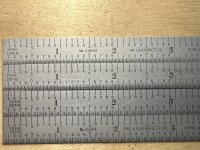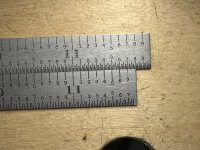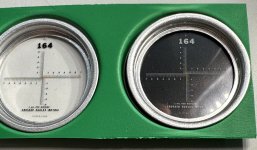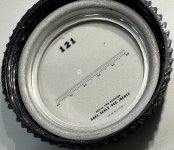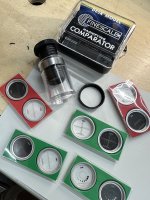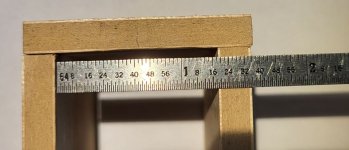Cheese
Member
Here are a couple of photos Chuck, you can see how small the graduations become.
The scales are from top to bottom:
6" with 1/32" & 1/64" markings on reverse.
12" with 1/32" & 1/64" markings on reverse.
300 mm with 1/2 mm & 1 mm markings on reverse.
150 mm with 1/2 mm & 1 mm markings on reverse.
Just a note in passing, when working with the scales, make sure you grab the correct one because the metric scales are actually metric in overall length.
[attachimg=1]
[attachimg=2]
[attachimg=3]
The scales are from top to bottom:
6" with 1/32" & 1/64" markings on reverse.
12" with 1/32" & 1/64" markings on reverse.
300 mm with 1/2 mm & 1 mm markings on reverse.
150 mm with 1/2 mm & 1 mm markings on reverse.
Just a note in passing, when working with the scales, make sure you grab the correct one because the metric scales are actually metric in overall length.
[attachimg=1]
[attachimg=2]
[attachimg=3]

